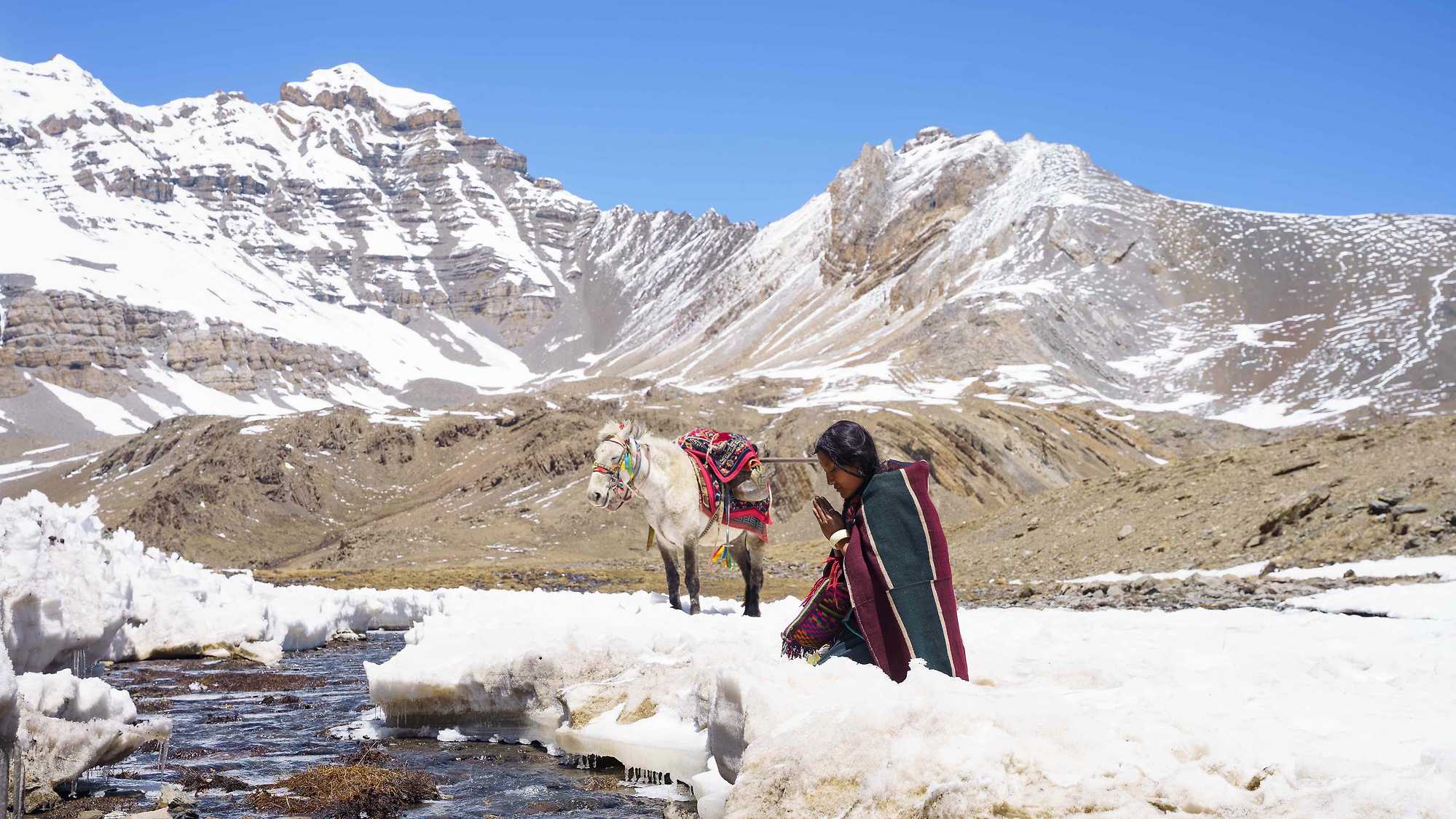How far would you go to prove yourself? Pema, accused of infidelity, embarks on a journey through the beautiful yet unforgiving Himalayan landscape to confirm her virtue.

At once a spiritual odyssey and a more concrete journey of female self-determination, this is a visually magnificent slow-burner filmed high in the Himalayas.
Shambhala 2024
Pema resides in a polyandrous village in the Himalaya Mountains as a newlywed, with her three fraternal husbands: Tashi, her chosen beloved; Karma, a kind Buddhist; and Dawa, the youngest of the brothers, still in school. The four live in content harmony until Karma returns to the monastery and Tashi embarks on a months-long journey for resources.
Before Tashi departs, he and Pema share an intimate night together, causing Pema to fall pregnant. Her joy rapidly becomes overshadowed when a rumour rips through the tiny village that Pema was unfaithful while Tashi was away. Word spreads to Tashi, and he doesn’t return. Determined to quash these accusations, the pregnant Pema takes it upon herself to find Tashi and prove her devotion to him. She quietly sets out on her solo journey, taking only the necessities, and Namkha, her trusty horse.
According to Tibetian Buddhist legend, Shambhala is a kingdom of peace and prosperity that exists somewhere between the Himalayas and the Gobi Desert. It is a place for those who have achieved complete enlightenment. While we follow Pema through the stunning landscape and experience each of the spiritual rituals she encounters on her journey, we also watch as she moves further away from the surface-level civility she grew up with to embrace the raw emotion she truly feels.
Cinephiles will make connections with Michelangelo Antonioni’s L’Avventura. As with this film, we experience a disappeared character drifting further from being the driving force of the story to become merely a memory that only serves as a catalyst for the protagonist’s true journey. However, where L’Avventura uses a character’s disappearance to highlight another character’s trifling existence, Shambhala uses a character’s disappearance to provoke a search for meaning in oneself. — Huia Haupapa
